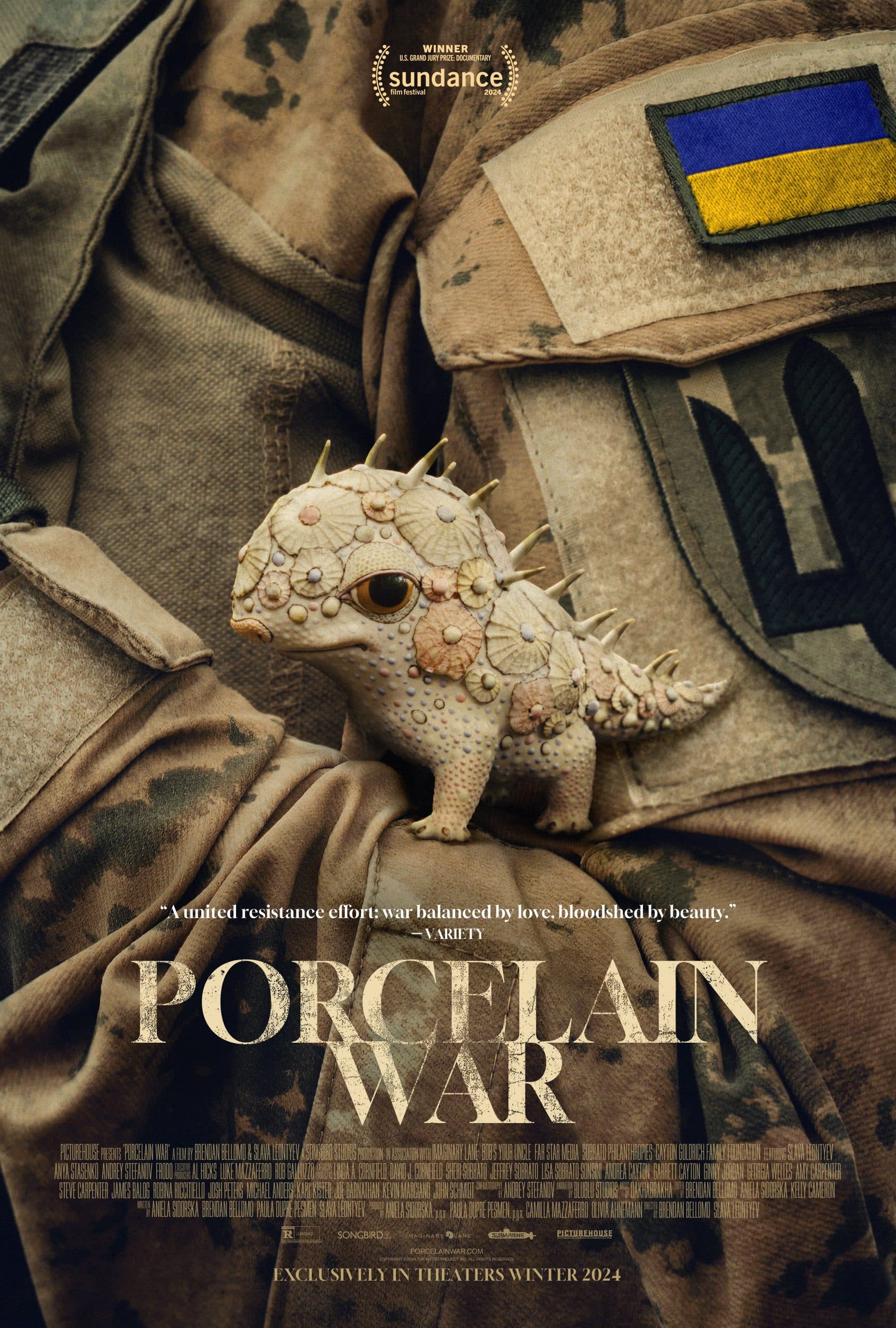
- Writers
- Aniela Sidorska, Brendan Bellomo, Paula DuPré Pesmen, Slava Leontyev
- Directors
- Brendan Bellomo, Slava Leontyev
- Rating
- R (United States)
- Running Time
- 87 minutes
- Release Date (US)
- November 22nd, 2024 (limited)
- Release Date (CAN)
- December 6th, 2024 (limited)
Overall Score
Rating Summary
In the last two years, amidst the immense impact of the Russian-Ukrainian war, plenty of Ukrainians and even directors from other nationalities have dived deep into the diverse perspective of the conflict. Their cameras focused mainly on the front, following soldiers on the battlefield. Through Porcelain War, Slava Leontyev and Brendan Bellomo present a different glimpse into the individuality people experience during a prolonged conflict. Slava and his wife, Anya Stasenko, are artists who design porcelain figurines living in Kharkiv. When the war commences, their friend from Crimea, Andrey Stefanov, joins them in Kharkiv to record the war, and eventually, Leontyev and Stefanov join the Ukrainian army to combat.
Porcelain War deals with the abrupt change in the status quo of life. In January 2022, Slava and Anya’s lives were close to normal. They would produce their pieces and take care of their children. In less than a month, everything changed, and instead of fleeing, as Slava decided to join the Ukrainian forces at the front. As a former soldier of the Ukrainian Special Forces, he takes a position when Russia invades Ukraine. Furthermore, there is a civic duty and an urgency to join his companions in the fight. The film is an understanding of the role one might assume in a specific situation like his; he understood the need to join forces to defend his land.
In a formal analysis, the film mixes footage from the battlefield with personal anecdotes of their lives as artists. Stefanov serves as the cinematographer, adding an individual layer of his vision upon the whole suffering. Besides the co-direction of Bellomo, the film is a diary of how those three individuals deal with feelings of loss, bombing, violence, uncertainty, and pain. There is a dichotomy between their sorrows and the art they attempt to continue producing even in a catastrophic environment. This balance between two completely different circumstances arranges an intriguing glimpse of the calamity that Ukraine suffers.
However, the film finds more substance and interest when focusing on the art rather than the war. Likewise, it becomes repetitive in its thesis about the importance of joining the war. Even though there is a patriotic reasoning surrounding Slava’s moral duty, the motivations circle back plenty of times to affirm what it means. The artistry and how it is vital to their surveillance is more engaging in the propositions that the film makes than the defensive idea. He and Anya’s relation to the ceramic figurines transcends their mental and physical conditions, and it becomes a fundamental aspect of their character. When it explores their relationships with the relatives that fled and their relation with the art, it is more effective in its construction.
Porcelain War does a decent job depicting the reactions to the Ukrainian-Russian war, illustrating how one’s moral responsibilities engage in joining the army and fighting on the frontlines. However, its bureaucratic construction avoids it providing a more prominent reflection on the human necessity in making art and how war affects one’s connection to art in a more significant scheme.
still courtesy of Picturehouse
If you liked this, please read our other reviews here and don’t forget to follow us on Twitter or Instagram or like us on Facebook.
Brazilian film writer. He is also a producer and executive producer for Zariah Filmes. Member of the International Film Society Critics Association (IFSCA), International Documentary Association (IDA), and Gotham and Media Film Institute.
Discover more from
Subscribe to get the latest posts sent to your email.
